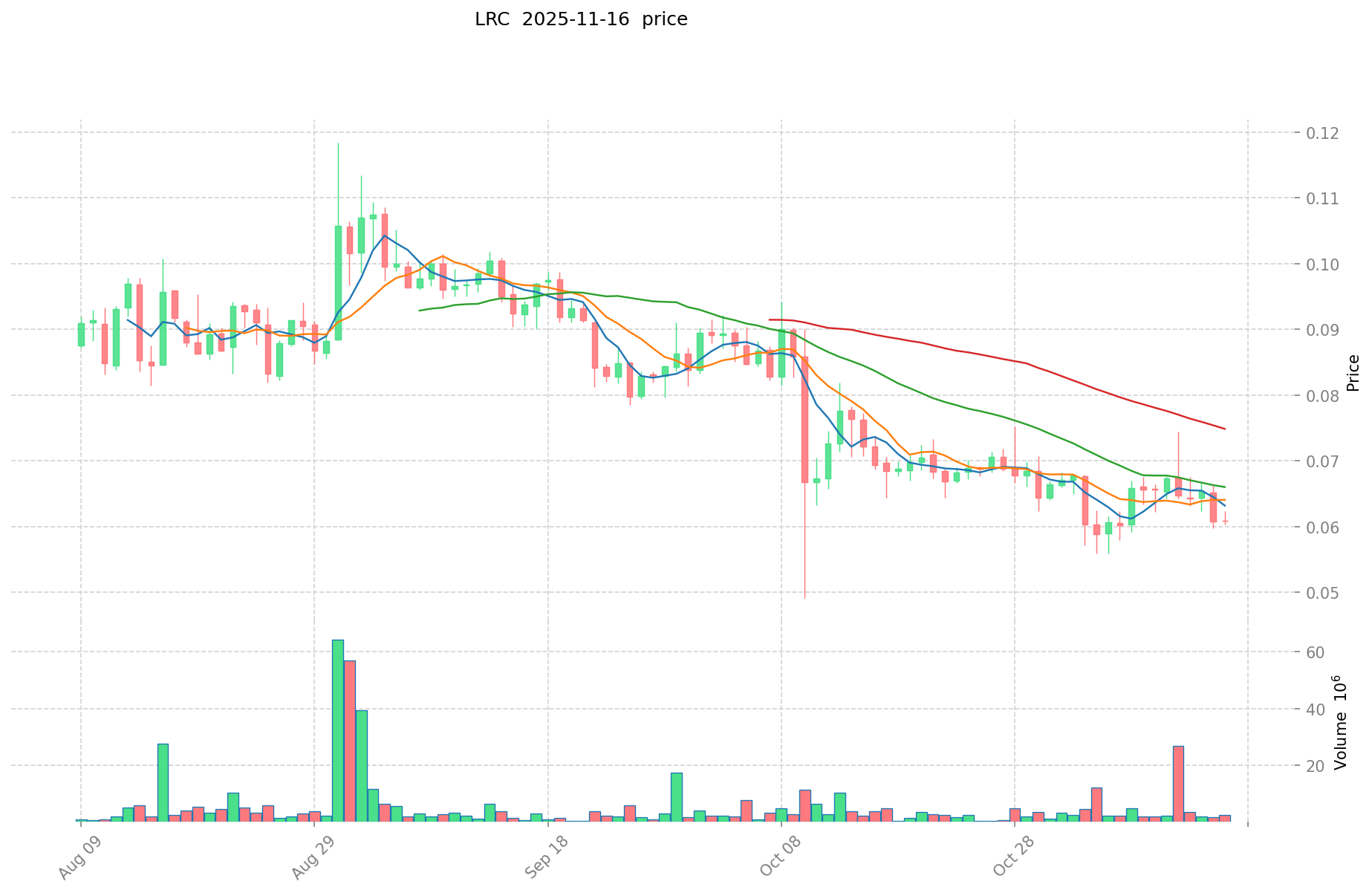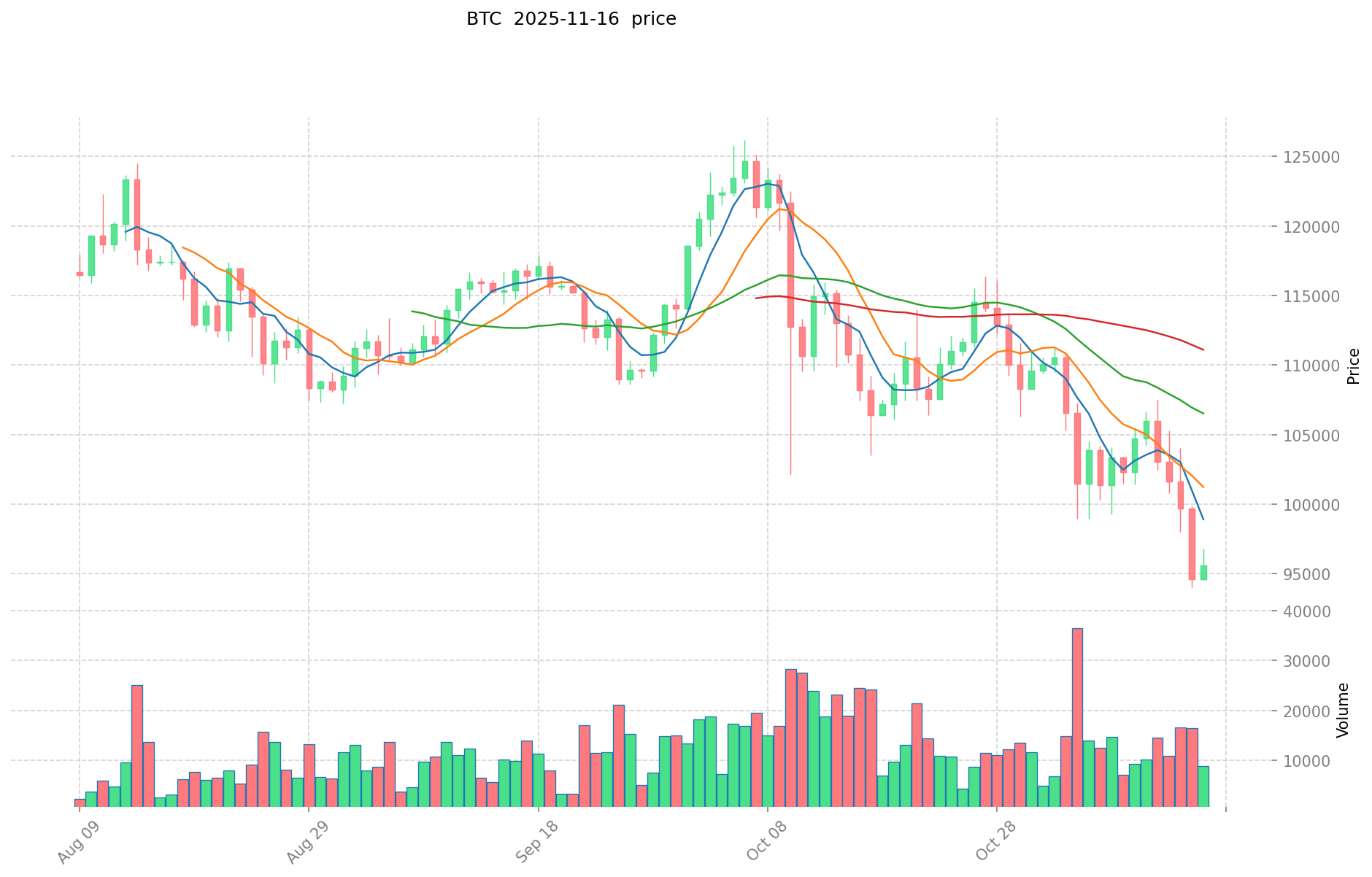LRC vs BTC: Comparing the Potential of Loopring and Bitcoin in the Cryptocurrency Market
The article provides a detailed comparison between Loopring (LRC) and Bitcoin (BTC), focusing on investment potential within the cryptocurrency market. It explores historical price trends, supply mechanisms, institutional adoption, and technological ecosystems. Readers will gain insights into which asset might be a better current buy, catering to both new and experienced investors. The content is structured logically, touching on price history, key investment factors, future price predictions, strategic comparisons, and risk analysis. Keywords include LRC, BTC, investment strategy, cryptocurrency market, and institutional adoption.Introduction: LRC vs BTC Investment Comparison
In the cryptocurrency market, Loopring vs Bitcoin comparison has always been a topic that investors cannot avoid. The two not only have significant differences in market cap ranking, application scenarios, and price performance, but also represent different crypto asset positioning.
Loopring (LRC): Since its launch in 2017, it has gained market recognition for its decentralized exchange protocol.
Bitcoin (BTC): Since its inception in 2009, it has been hailed as "digital gold" and is one of the cryptocurrencies with the highest global trading volume and market capitalization.
This article will provide a comprehensive analysis of the investment value comparison between LRC and BTC, focusing on historical price trends, supply mechanisms, institutional adoption, technological ecosystems, and future predictions, and attempt to answer the question that investors are most concerned about:
"Which is the better buy right now?"
I. Price History Comparison and Current Market Status
LRC and BTC Historical Price Trends
- 2021: LRC reached its all-time high of $3.75 on November 10, 2021.
- 2025: BTC hit a new all-time high of $126,080 on October 7, 2025.
- Comparative analysis: LRC has fallen from its all-time high of $3.75 to the current price of $0.05854, while BTC has shown more resilience, currently trading at $93,293.1 after reaching its all-time high of $126,080.
Current Market Situation (2025-11-17)
- LRC current price: $0.05854
- BTC current price: $93,293.1
- 24-hour trading volume: LRC $147,663.75 vs BTC $943,127,610.14
- Market Sentiment Index (Fear & Greed Index): 10 (Extreme Fear)
Click to view real-time prices:
- View LRC current price Market Price
- View BTC current price Market Price


II. Core Factors Affecting the Investment Value of LRC vs BTC
Supply Mechanisms Comparison (Tokenomics)
- LRC: Maximum supply capped at 1.37 billion tokens with a deflationary model through fee burning mechanism
- BTC: Fixed maximum supply of 21 million coins with halving events approximately every four years
- 📌 Historical pattern: BTC's halving events have historically triggered bull cycles, while LRC's deflationary mechanism creates steady upward price pressure as network usage increases.
Institutional Adoption and Market Applications
- Institutional holdings: BTC is significantly more adopted by institutions, with major companies like MicroStrategy and Tesla holding it on their balance sheets
- Enterprise adoption: BTC serves as a treasury reserve asset and settlement layer, while LRC enables more efficient DEX trading and lower gas fees in the Ethereum ecosystem
- Regulatory attitudes: BTC enjoys clearer regulatory status in most jurisdictions, while LRC and other layer-2 tokens face more regulatory uncertainty
Technical Development and Ecosystem Building
- LRC technical upgrades: zkRollup technology providing scalability solutions for Ethereum, supporting up to 2,025 transactions per second
- BTC technical development: Lightning Network adoption for faster payments, Taproot upgrade enhancing privacy and smart contract capabilities
- Ecosystem comparison: BTC has stronger payment and store of value applications, while LRC focuses on DEX functionality, order matching, and fee reduction in DeFi applications
Macroeconomic Factors and Market Cycles
- Performance during inflation: BTC has demonstrated stronger inflation hedge characteristics due to its fixed supply and broader market recognition
- Macroeconomic monetary policy: Interest rate changes tend to impact BTC more directly as a macro asset, while LRC is more influenced by Ethereum ecosystem growth
- Geopolitical factors: BTC benefits from global recognition during financial uncertainty, while LRC's value is more tied to DeFi adoption and Ethereum scaling solutions
III. 2025-2030 Price Prediction: LRC vs BTC
Short-term Prediction (2025)
- LRC: Conservative $0.0528 - $0.0581 | Optimistic $0.0581 - $0.0685
- BTC: Conservative $86,678 - $93,202 | Optimistic $93,202 - $134,211
Mid-term Prediction (2027)
- LRC may enter a growth phase, with prices expected in the range of $0.0418 - $0.0867
- BTC may enter a bullish market, with prices expected in the range of $62,340 - $143,015
- Key drivers: Institutional capital inflow, ETF, ecosystem development
Long-term Prediction (2030)
- LRC: Base scenario $0.0526 - $0.0956 | Optimistic scenario $0.0956 - $0.1176
- BTC: Base scenario $178,492 - $194,013 | Optimistic scenario $194,013 - $238,637
Disclaimer: The above predictions are based on historical data and current market trends. Cryptocurrency markets are highly volatile and subject to rapid changes. These forecasts should not be considered as financial advice. Always conduct your own research before making investment decisions.
LRC:
| 年份 | 预测最高价 | 预测平均价格 | 预测最低价 | 涨跌幅 |
|---|---|---|---|---|
| 2025 | 0.0685108 | 0.05806 | 0.0528346 | 0 |
| 2026 | 0.086068144 | 0.0632854 | 0.06012113 | 8 |
| 2027 | 0.08662505552 | 0.074676772 | 0.04181899232 | 27 |
| 2028 | 0.1040396787504 | 0.08065091376 | 0.0717793132464 | 37 |
| 2029 | 0.098809466993064 | 0.0923452962552 | 0.047096101090152 | 57 |
| 2030 | 0.117560179397682 | 0.095577381624132 | 0.052567559893272 | 63 |
BTC:
| 年份 | 预测最高价 | 预测平均价格 | 预测最低价 | 涨跌幅 |
|---|---|---|---|---|
| 2025 | 134211.312 | 93202.3 | 86678.139 | 0 |
| 2026 | 130762.8269 | 113706.806 | 71635.28778 | 21 |
| 2027 | 143014.7352465 | 122234.81645 | 62339.7563895 | 30 |
| 2028 | 179043.4473951375 | 132624.77584825 | 78248.6177504675 | 41 |
| 2029 | 232192.8263163236875 | 155834.11162169375 | 110642.2192514025625 | 66 |
| 2030 | 238636.566831880724062 | 194013.46896900871875 | 178492.39145148802125 | 107 |
IV. Investment Strategy Comparison: LRC vs BTC
Long-term vs Short-term Investment Strategies
- LRC: Suitable for investors focused on DeFi ecosystem potential and Ethereum scalability solutions
- BTC: Suitable for investors seeking stability, inflation hedge, and broader market recognition
Risk Management and Asset Allocation
- Conservative investors: LRC: 5-10% vs BTC: 90-95%
- Aggressive investors: LRC: 20-30% vs BTC: 70-80%
- Hedging tools: Stablecoin allocation, options, cross-currency portfolios
V. Potential Risk Comparison
Market Risks
- LRC: Higher volatility, dependent on Ethereum ecosystem growth
- BTC: Susceptible to macroeconomic factors, regulatory news
Technical Risks
- LRC: Scalability, network stability, competition from other layer-2 solutions
- BTC: Mining centralization, potential security vulnerabilities
Regulatory Risks
- Global regulatory policies have different impacts on both assets, with BTC generally having clearer regulatory status
VI. Conclusion: Which Is the Better Buy?
📌 Investment Value Summary:
- LRC advantages: DEX functionality, lower fees, Ethereum scaling solution
- BTC advantages: Established market leader, institutional adoption, inflation hedge
✅ Investment Advice:
- New investors: Consider a BTC-heavy portfolio with small LRC allocation for diversification
- Experienced investors: Balanced approach with higher LRC allocation based on risk tolerance
- Institutional investors: Focus on BTC for treasury reserves, explore LRC for DeFi exposure
⚠️ Risk Warning: Cryptocurrency markets are highly volatile. This article does not constitute investment advice. None
VII. FAQ
Q1: What are the main differences between LRC and BTC? A: LRC is a token focused on decentralized exchange protocols and Ethereum scaling solutions, while BTC is the leading cryptocurrency known as "digital gold" with a larger market cap and wider institutional adoption.
Q2: How do the supply mechanisms of LRC and BTC compare? A: LRC has a maximum supply of 1.37 billion tokens with a deflationary model through fee burning, while BTC has a fixed maximum supply of 21 million coins with halving events approximately every four years.
Q3: Which asset has shown better price performance recently? A: BTC has shown more resilience, currently trading at $93,293.1 after reaching its all-time high of $126,080, while LRC has fallen from its all-time high of $3.75 to the current price of $0.05854.
Q4: How do institutional adoption rates differ between LRC and BTC? A: BTC has significantly higher institutional adoption, with major companies holding it on their balance sheets, while LRC's adoption is more focused within the DeFi and Ethereum ecosystem.
Q5: What are the key factors affecting the long-term value of each asset? A: For LRC, key factors include DeFi adoption, Ethereum scaling solutions, and DEX functionality. For BTC, factors include institutional adoption, regulatory clarity, and its role as an inflation hedge.
Q6: How should investors approach risk management when considering LRC vs BTC? A: Conservative investors might allocate 5-10% to LRC and 90-95% to BTC, while more aggressive investors could consider 20-30% LRC and 70-80% BTC, always keeping in mind individual risk tolerance and market conditions.
Q7: What are the potential risks associated with investing in LRC and BTC? A: LRC faces higher volatility and dependence on Ethereum ecosystem growth, while BTC is susceptible to macroeconomic factors and regulatory news. Both have technical risks, with LRC concerned with scalability and competition, and BTC facing mining centralization issues.
Share
Content